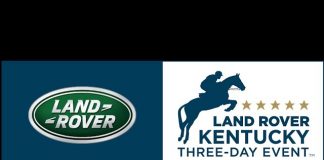At the 1996 Paralympics in Atlanta, Georgia, when para-equestrian debuted, there were 61 competitors from 16 countries competing on borrowed horses provided by the host nation. Each rider drew a horse’s name out of a container. Then, they had a little time to familiarize themselves with the horse before competing. This continued through the 2000 Games in Sydney, Australia. Then, by the 2004 Games in Athens, competitors were allowed to bring their own horses for the first time.
This year in France, a total of 78 para dressage riders from 30 nations will compete on horses they have trained on, either owned by the rider or by an owner who supports the rider. There will be three sets of medals in each of the five grades up for grabs; medals are awarded in this order: individual; team, and individual freestyle.
In contrast with the virtually empty stands of the COVID-restricted Tokyo 2020/21 Paralympics, and only partially filled stands from other previous Games, the 2024 Paris Paralympic equestrian venue was one of the first two sports to sell out. This marks a significant increase in interest in this top-level equestrian sport.
Promising U.S. Paralympic Equestrian Team for Paris 2024
It will be exciting to witness performances from all of the athletes at the Paris 2024 Paralympic equestrian venue, but especially those of the strong contingent from the USA. The U.S. team won bronze in the Tokyo 2020/21 Paralympics, with U.S. Grade I rider Roxanne Trunnell, who is also on the team for Paris 2024, taking two gold medals (one each in the individual and freestyle competitions).
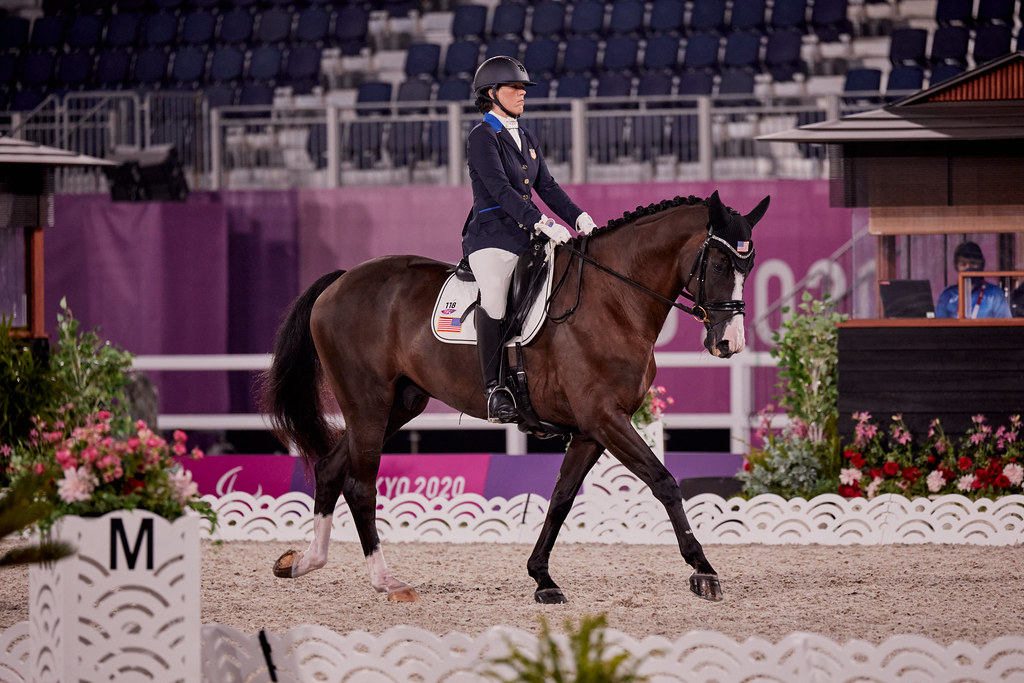
Over the 2024 competition season thus far, the U.S. Para Dressage Team has won at numerous CPEDIs (international-level para dressage competition). They took top honors on the Florida circuit in early 2024, then won several team competitions in Europe this spring (including in Fontainebleau, France, and then in Mannheim and Hagen, Germany, respectively). And the individual U.S. riders, all mounted on horses relatively new to them, kept earning better and better scores along the way.
U.S. Para Dressage Team Chef d’Equipe and Technical Advisor Michel Assouline talked about the team’s recent success, which is the culmination of more than a decade of planning and preparation, “Heading into the Paralympic Games with the highest-ever scoring team in U.S. history―in the run-up to Paris 2024―is beyond our wildest imagination. It’s a very proud moment for the U.S. with all the work that has been invested into this program over the past several years. It’s our collective goal to honor this historical occurrence with pride and produce results that make our country proud.”
How Para Dressage Competition Works
Para dressage competitors’ abilities are officially assessed before they compete the first time. They are assigned “capability grades” so that they compete against other riders with similar challenges within a grade level. The five grades are designated by Roman numerals with Grade I riders being the least able-bodied and Grade V the most.
To assist them in communicating with their horse, riders may use a wide range of compensating aids including adapted saddles, reins, stirrups and boots (all of which must be pre-approved the Fédération Equestre Internationale (FEI). Vision-impaired riders also make use of a caller (someone who calls out the arena’s positioning letters) to help the rider know where they are as they ride their test.
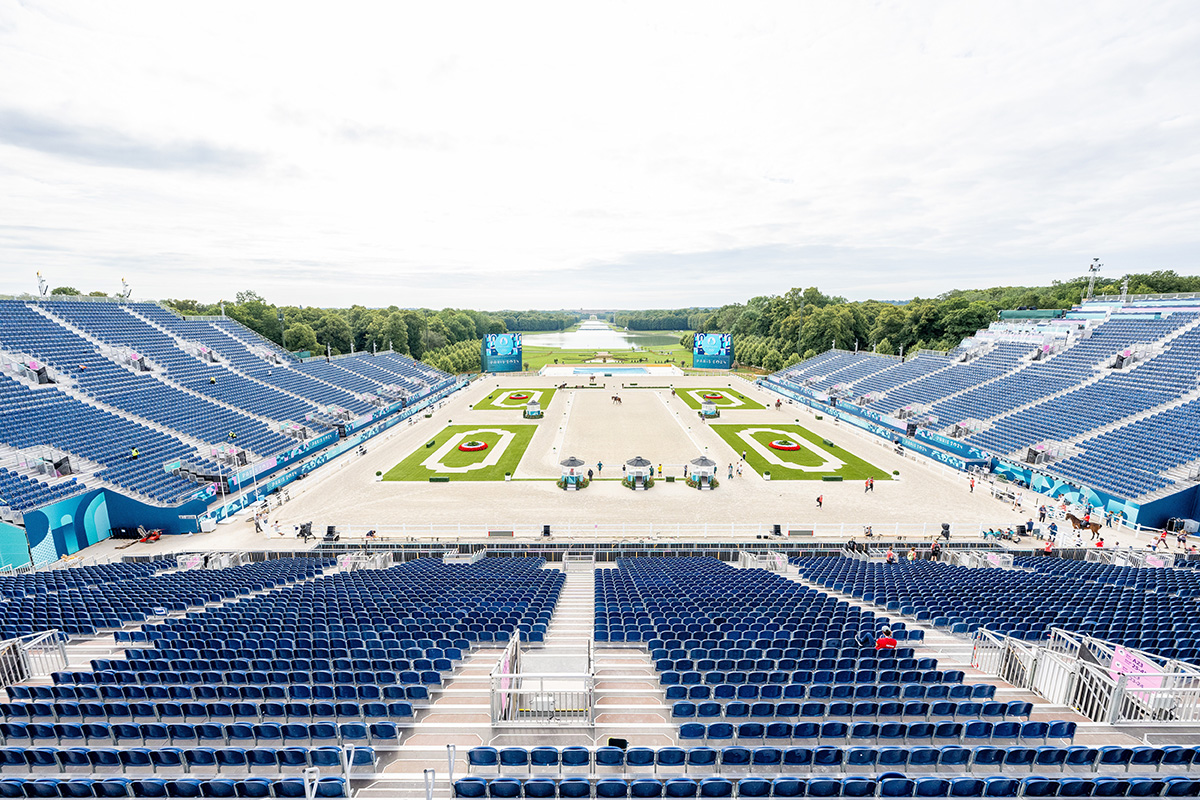
Grades I through III ride in a smaller dressage arena (20m x 40m), while grades IV and V perform a larger one (20m x 60m, the same size used for Olympic dressage). Grade I riders perform their tests at the walk only. Grade II riders must show walk and trot, while grades III and above do work in walk, trot and canter (although Grade III may canter only in the freestyle, not in the individual and team tests).
Competitors in Grades I, II and III, are allowed to be accompanied to the competition area by a “friendly horse” which is led by a groom and stood just outside the dressage ring while the competing horse and rider perform their test. This provides comfort to the competing horses so that they hopefully stay calm and focused on their job.
The dressage tests for para are specifically designed for each grade level. All riders will perform the FEI Para Grand Prix Test A for their grade in the individual competition, after which the individual medals are awarded. Then, athletes designated to compete for a team will ride the FEI Para Grand Prix Test B; this determines the team medals. Finally, the eight highest scores from each grade in the Grand Prix A (individual) Test return on the final day of competition to contest for freestyle medals.
Countries are allowed to send three or four potential team riders to the Paralympics, but only three may compete for their nation in the team test. Each country must declare which three riders will compete for their team after the individual tests are completed. Teams are required to have at least one rider from either Grade I, II or III, but cannot have more than two from any one grade. Countries without enough entrants to form a team may send individual athletes who have met the FEI’s requirements for qualification.
Paris 2024 Paralympics Equestrian Schedule
As in the other Olympic equestrian sports, all horses must first be assessed for overall health and soundness by the Ground Jury during horse inspections on September 2. Then, all 78 horse and rider combos perform their individual tests on one of the first two days of competition (Grades I, II and III on day one, September 3, and Grades IV and V on day two, September 4). Each day of the individual competition will be capped with the medal ceremonies for the grades competing.
Then, September 5 is a day of rest, after which the team test is contested for all five levels on day three of competition (September 6). On the final day of competition (September 7), the top eight scorers from each grade return for their freestyle tests set to music, and a final set of medals will be awarded.
After that it’s farewell to Versailles from the Paralympic equestrians and fans. The work restoring the grounds back to a peaceful park then begins. Within months, the stadium, stables and veterinary facilities will exist only in photos, video footage and in the memories of those who experienced the Paris 2024 equestrian competition.
Paris 2024 Paralympics Para Dressage Schedule
Ride times to be determined after first horse inspection.
Monday, September 2
◆ First Horse Inspection & Arena Familiarization
Tuesday, September 3
◆ Grade III Individual Tests: 3:00 a.m. U.S. Eastern Time (9:00 a.m. Paris Time)
◆ Grade II Individual Tests: 5:45 a.m. U.S. Eastern Time (11:45 a.m. Paris Time)
◆ Grade I Individual Tests: 7:45 a.m. U.S. Eastern Time (1:45 p.m. Paris Time)
◆ Individual Medal Ceremonies for Grades I, II and III
Wednesday, September 4
◆ Grade IV Individual Tests: 4:00 a.m. U.S. Eastern Time (10:00 a.m. Paris Time)
◆ Grade V Individual Tests: 6:55 a.m. U.S. Eastern Time (12:55 p.m. Paris Time)
◆ Individual Medal Ceremonies for Grades IV and V
Thursday, September 5
◆ Rest Day
Friday, September 6
◆ Grade IV Team Tests: 3:30 a.m. U.S. Eastern Time (9:30 a.m. Paris Time)
◆ Grade V Team Tests: 5:10 a.m. U.S. Eastern Time (11:10 a.m. Paris Time)
◆ Grade I Team Tests: 7:10 a.m. U.S. Eastern Time (1:10 p.m. Paris Time)
◆ Grade II Team Tests: 9:17 a.m. U.S. Eastern Time (3:17 p.m. Paris Time)
◆ Grade III Team Tests: 10:29 a.m. U.S. Eastern Time (4:29 p.m. Paris Time)
◆ Team Medal Ceremony
Saturday, September 7
◆ Second Horse Inspection
◆ Grade IV Individual Freestyle Tests: 3:30 a.m. U.S. Eastern Time (9:30 a.m. Paris Time)
◆ Grade V Individual Freestyle Tests: 4:57 a.m. U.S. Eastern Time (10:57 a.m. Paris Time)
◆ Grade I Individual Freestyle Tests: 6:39 a.m. U.S. Eastern Time (12:39 p.m. Paris Time)
◆ Grade II Individual Freestyle Tests: 8:06 a.m. U.S. Eastern Time (2:06 p.m. Paris Time)
◆ Grade III Individual Freestyle Tests: 9:33 a.m. U.S. Eastern Time (3:33 p.m. Paris Time)
◆ Individual Freestyle Medal Ceremonies (all grade levels)
FEI officials for para dressage include: Technical Delegate Dr. Jan Holger Holtschmit (GER); President of the Ground Jury Anne Prain (FRA); Member Ground Jury Suzanne Cunningham (AUS); Member Ground Jury Kristi Wysocki (USA); Member Ground Jury Ineke Jansen (NED); Member Ground Jury Freddy Leymann (BEL); Member Ground Jury John Robinson (GBR); Member Ground Jury Katherine Lucheschi (ITA); Traveling Reserve Jury Member Elke Ebert (GER); Chief Steward Juliet Whatley (GBR).
U.S. Para Dressage Team Members
Four horse and rider combinations were chosen on July 11 to compete for the USA at the Paris 2024 Paralympics. After the two days of individual medals competition, the three riders whose scores for count for the team score will be chosen. The U.S. Para Dressage Team members are:
◆ Rebecca Hart (Loxahatchee, Fla.) and Floratina, a 2008 Hanoverian mare (Fidertanz 2 x Rubin Royal OLD) owned by Rowan O’Riley and cared for by Mackenzie Young
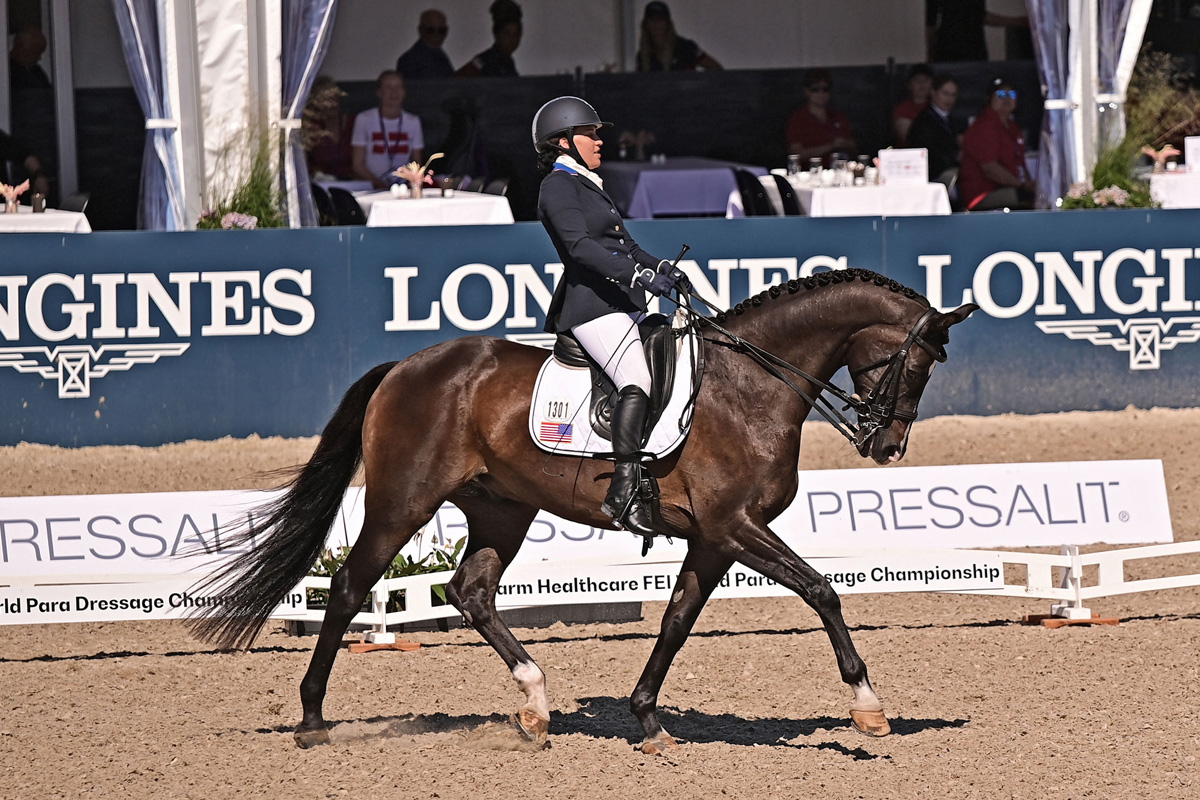
◆ Fiona Howard (Boston, Mass.) and Diamond Dunes, a 2013 Hanoverian gelding (De L’Or x Wolkentanz) owned by Dressage Family LLC and Hof Kasselmann and cared for by Helen Claire McNulty
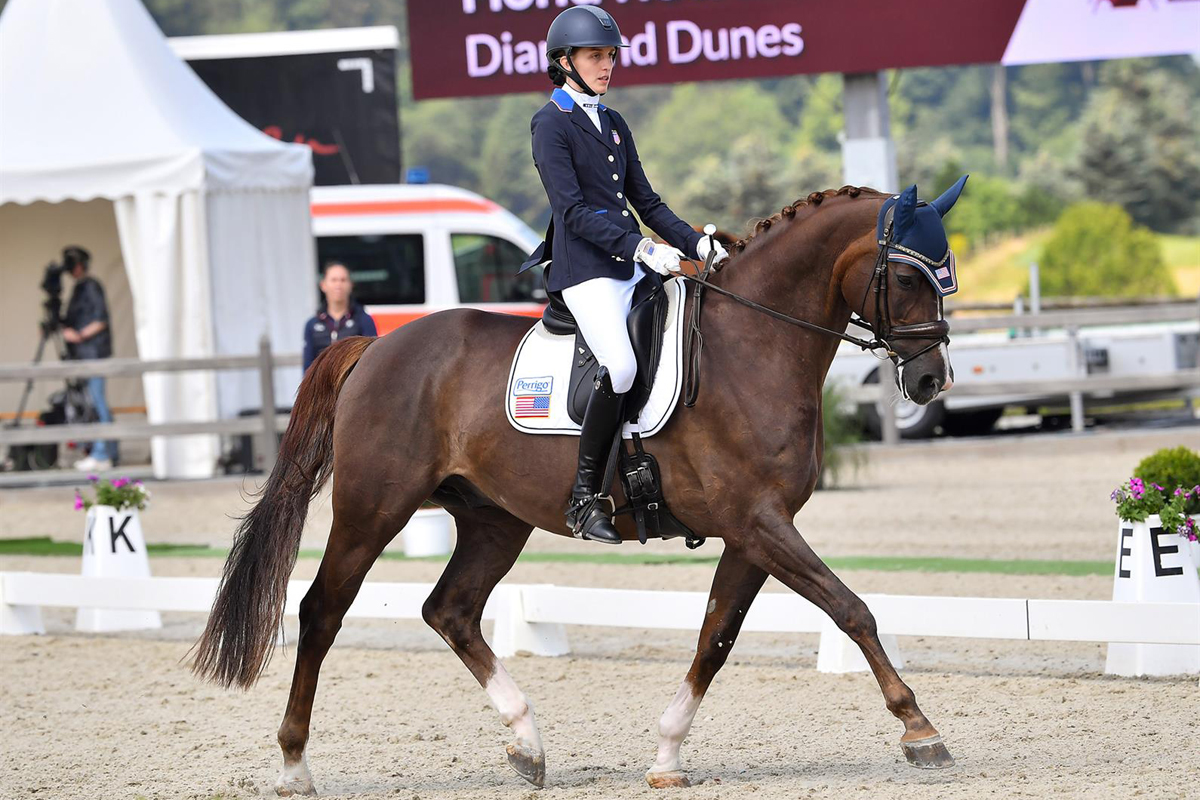
◆ Kate Shoemaker (Wellington, Fla.) and Vianne, a 2016 Hanoverian mare (Vitalis x Ramiro’s Bube) owned by Nocordia USA and cared for by Katherine Barrett
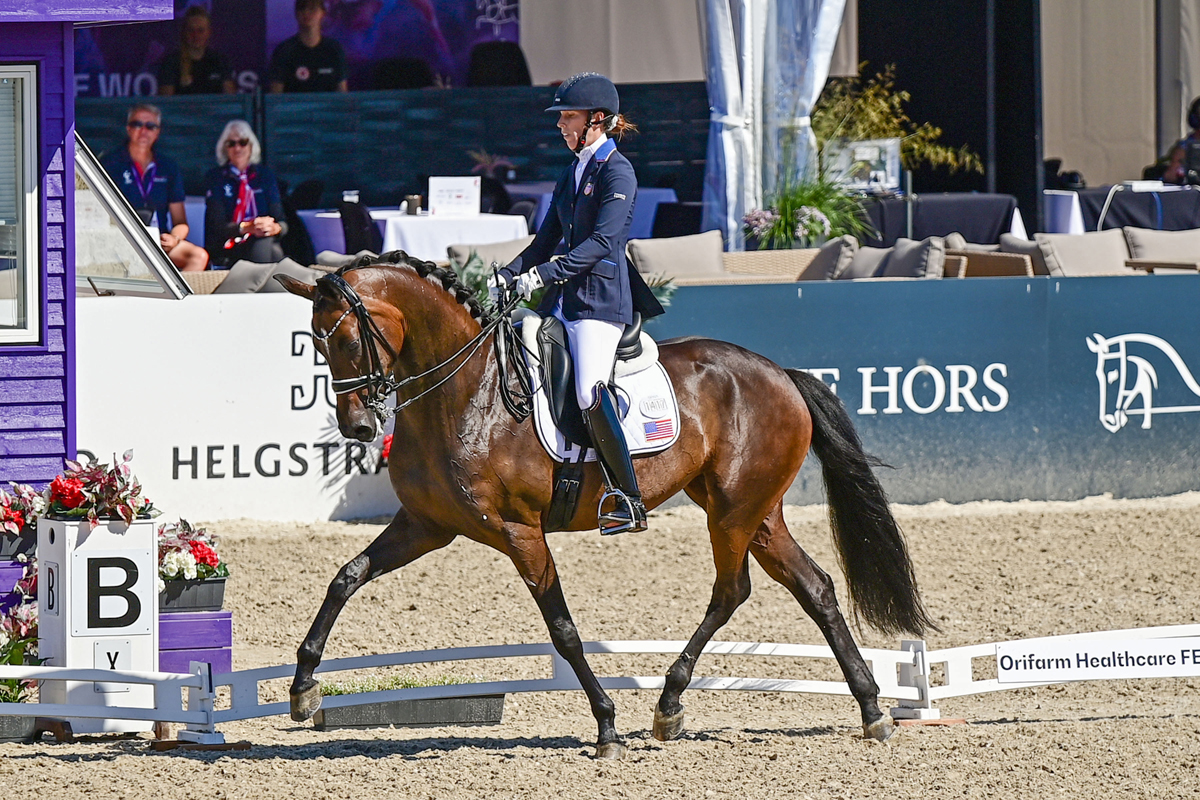
◆ Roxanne Trunnell (Royal Palm Beach, Fla.) and Fan Tastico H, a 2017 Oldenburg gelding (Fuersentaball OLD x Weltmeyer) owned by Karin Flint and cared for by Rafael Hernandez-Carillo
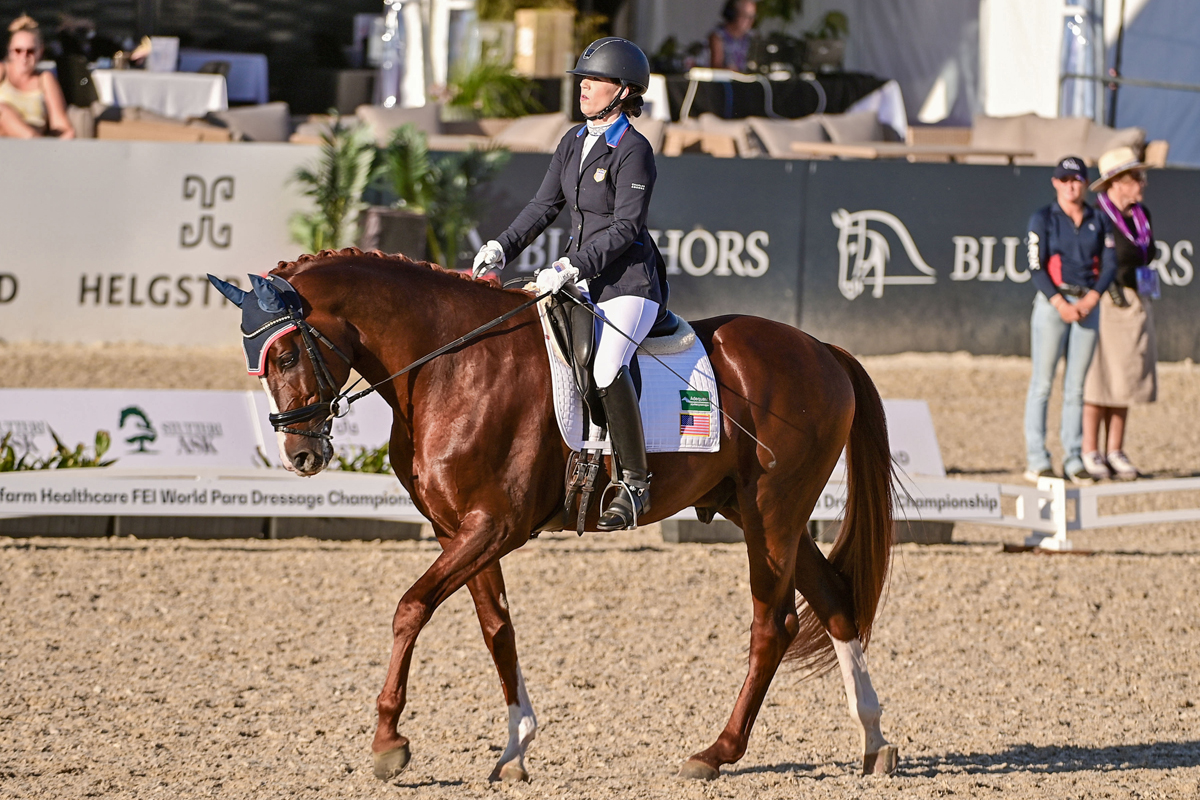
Chef d’Equipe and Technical Advisor for the U.S. Para-Equestrian Team is Michel Assouline and Team Leader is Laureen Johnson. The team will be supported by team veterinarian Dr. Kim Snyder, human physiotherapist Joanne Frantz, and personal care assistant, Tina Wentz
Find more information about the U.S. Para Dressage Team riders, horses and staff here.
How To Watch & Cheer
If you don’t have plans to travel to France to support the U.S. Para Dressage Team there, you’ll want to watch all of the action streamed on the NBC Universal family of channels since they hold broadcast rights for both the Olympics and Paralympics in the USA.
The Paris 2024 para-equestrian competition will be livestreamed on Peacock, NBCOlympics.com, NBC.com, the NBC app, and the NBC Sports app. More specifically for horse sports, check out this direct link for equestrian streaming information or find the full Paralympics schedule here.
The livestreams will start early for U.S. viewers; start times range from 3:00 – 4:00 a.m. U.S. Eastern Time. If you want to be assured of seeing every ride, it appears that a subscription to Peacock may be your best bet. They have two package options, one that offers just livestreaming or a plus level that offers on-demand playback of the competitions as well.
If you would like to support the U.S. team while enjoying some retail therapy at the same time, shop for US Equestrian swag at shopusef.org or Team USA gear on the United Olympic and Paralympic Committee’s retail site, teamusashop.com.
Contributions to the United States Equestrian Team Foundation (USET) also go to directly support our American riders in international competition. In many cases, donors may designate that contributions go to a specific rider. For more information, visit uset.org.
Consider hosting a Paralympic viewing party and setting out a collection jar for USET Foundation donations. Supporting “your” U.S. athletes, whether it be by offering monetary support or just cheering them on or both, makes the party even more fun!
Go Team USA and best of luck to all of the horses and riders at the Paris 2024 Paralympic Games. Let the Games begin!
Thanks to CareCredit for our spring and summer equestrian coverage.





